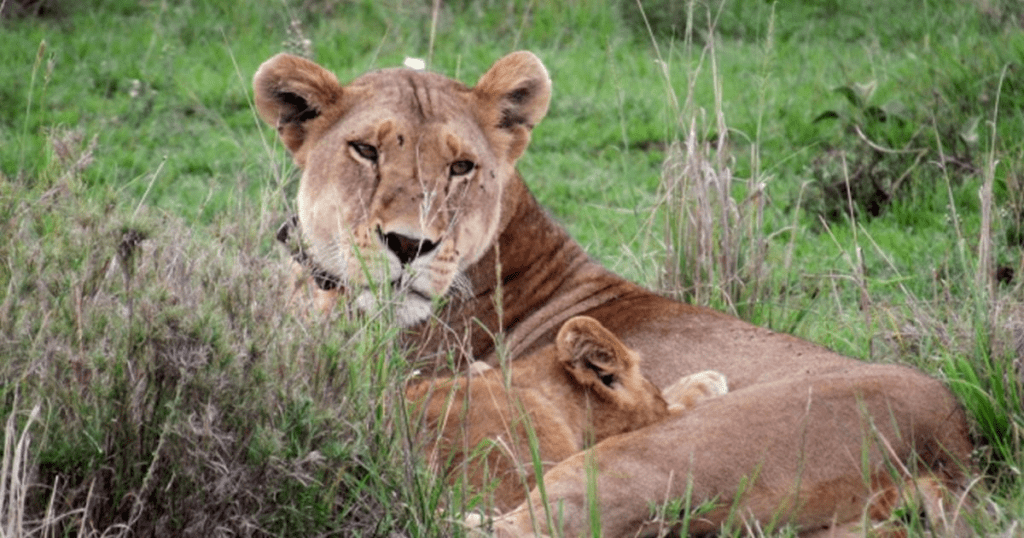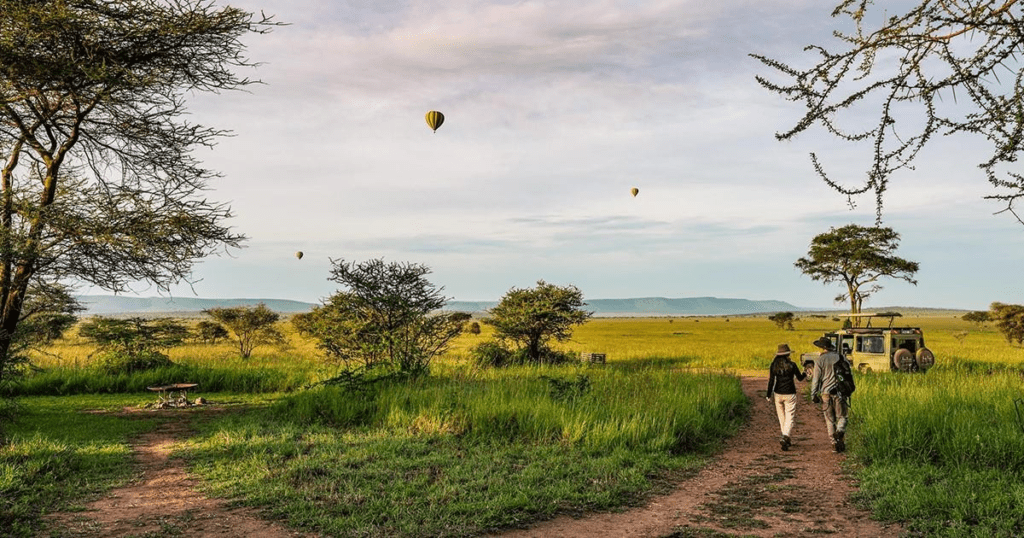
2024 Masai Mara Park Entry Fees & Rules
- byscarfacepride
- - May 2, 2024
Home » Blog » 2024 Masai Mara Park Entry Fees & Rules
In January 2024, a seismic shift rippled through the wildlife conservation world as the Narok County Government of Kenya announced significant revisions to the park fees for the revered Maasai Mara Game Reserve. This decision has sparked both intrigue and apprehension among avid nature enthusiasts and prospective safari adventurers alike.
For those planning to visit the Masai Mara in 2024-2025, it’s essential to be aware of the updated entry fees and rules to ensure a smooth and enjoyable experience.
Entry Fees for 2024-2025
The Masai Mara National Reserve has updated its entry fees, effective from January 1, 2024. These fees vary depending on the time of year, visitor’s nationality, and age group.
Previously, visitors were accustomed to a standard park fee of USD 80 per day, regardless of the season. However, the latest adjustments now introduce a dynamic pricing structure, with non-resident adults facing a staggering 2.5x increase during peak seasons. This means that instead of the familiar USD 80, visitors will now encounter varying rates depending on the month of their visit.
January – June
- Foreign Non-Residents:
- Adults: $100 per person per day
- Children (3-12 years): $50 per person per day
- Students: $50 per person per day
- East African Residents:
- Adults: 4,500 KSH per person per day
- Children: 2,000 KSH per person per day
- Students: 2,000 KSH per person per day
- Kenyan Citizens:
- Adults: 3,000 KSH per person per day
- Children: 1,000 KSH per person per day
- Students: 1,000 KSH per person per day
- Narok Residents:
- Adults: 2,000 KSH per person per day
- Children (above 10 years): 500 KSH per person per day
- Children (below 10 years): Free
July – December
- Foreign Non-Residents:
- Adults: $200 per person per day
- Children (3-12 years): $50 per person per day
- Students: $50 per person per day
- East African Residents:
- Adults: 4,500 KSH per person per day
- Children: 2,000 KSH per person per day
- Students: 2,000 KSH per person per day
- Kenyan Citizens:
- Adults: 3,000 KSH per person per day
- Children: 1,000 KSH per person per day
- Students: 1,000 KSH per person per day
- Narok Residents:
- Adults: 2,000 KSH per person per day
- Children (above 10 years): 500 KSH per person per day
- Children (below 10 years): Free
Vehicle Entry Fees
Vehicles entering the Masai Mara National Reserve are subject to entry fees based on their seating capacity:
- Vehicles with less than 6 seats: 500 KSH per day
- Vehicles with 6-12 seats: 1,000 KSH per day
- Vehicles with 12-24 seats: 3,000 KSH per day
- Vehicles with 25-44 seats: 4,000 KSH per day
Balloon Services Fees
For those interested in experiencing the Masai Mara from above, the following balloon services fees apply:
- Annual balloon operational permits: 300,000 KSH
- Single landing fees for adults: $80 per person
- Single landing fees for children: $35 per person
However, the revisions don’t stop there. Beyond these fees, visitors must also navigate additional charges imposed by lodges within the reserve. These supplementary fees, ranging from $25 to $80 per adult, vary based on the lodge’s location within the park.
The implications of these changes extend beyond mere financial considerations, touching upon broader themes of accessibility, conservation, and the future of sustainable tourism in the region. There have been discussions regarding the fear that these exorbitant prices might dissuade tourists from visiting Kenya and shift them to more economical alternatives like Tanzania. But in fact, this development is precisely to create an opposite reality. A reality that hinges stronger than before on the protection and prosperity of their present.
As one of the leading safari tour operators in East Africa, we not only understand their intent, but also embrace it wholeheartedly. Here’s why.
Africa’s natural wealth is under threat:
Africa, a continent that has the world’s most biodiverse regions, including 8 of the 36 recognised global biodiversity hotspots, has lost 70% of their primary vegetation. Additionally, the forests on the East African coasts are currently one of the ten most threatened biodiversity hotspots in the world.
It’s an alarming fact that Africa is aware of, and has been taking measures to conserve biodiversity, reduce the loss of species, and slow down ecosystem degradation. It is also committed to fulfilling United Nation’s Global Biodiversity Framework’s 30 by 30 goal, which aims to conserve at least 30% of biodiversity regions and ecosystem services by 2030.
Yet the impact of their efforts has not been able to match this goal, and a lot of variables will have to fall in place to make this happen. These include, sufficient financial resources, easily accessible global funding, adequate resources for biodiversity conservation, and a lot more that is beyond the scope of this blog post.
To put things into perspective and showcase the grave reality, achieving the 30 by 30 goal would require around US $20 – $25 billion. US $20 – $25 billion.
While the revenue generated by the recent adjustment in entry fees may not reach the staggering amount required, it can be undoubtedly channelled to bolster their efforts to conserve their biodiversity.
Conservation of forests and the wildlife

Imagine stepping into a conservancy, filled with anticipation for the wild wonders that await – from heart-pounding lion chases to heartwarming scenes of motherly care to baby elephants. But you come back with no such moments to boast about, not because that’s the unpredictable nature of safaris, but because there’s scarcity of species to see. Even the thought of their absence sounds sad and scary, right?
Unfortunately, the same wildlife species that draw travellers across the globe to Africa are in danger. The reasons range from human-inflicted harm to dwindling natural habitats. That’s why the continent, including Kenya Wildlife Services, has always been at the forefront of wildlife conservation initiatives. Their committed endeavours include combating poaching, rehabilitating habitats, reintroducing species, protecting the endangered species, and more.
Currently, the only crucial difference is, the urgency with which they need support to accelerate these efforts is at an all-time high.
The increased monetary support will help them to invest in activities that require the most attention. The scale, scope, and impact of their efforts can be amplified to give Africa’s wildlife the present and the future they deserve.
Empowerment of local communities

Think about any safari you’ve been on, and you’ll realise, the experience is only complete with the inclusion of local communities. They’re indispensable, thanks to the easy access they offer to their firsthand knowledge and culture. That’s why it’s crucial to invest in their well-being and offer monetary recognition for their efforts.
The best part is, investing in their welfare delivers dual results. The first one being an upgrade in their lifestyle. The second one being their continued role as invaluable guides for tourists.
Africa has long recognised the benefits of Payments Ecosystem Services (compensating the owners/custodians of land for providing environmental services to ensure the benefits continue) for countries like Kenya, Tanzania, and more. The increase in park fees could aid in using PES as a tool to protect ecosystems in Africa, echoing the opportunity identified by the African Developed Bank a decade ago. Furthermore, the money can be reinvested in community projects for those residing nearby.
In essence, one safari journey of yours has the potential to enrich the lives of many people, creating a ripple effect of positive changes for years to come.
Richer travel experience

Have you wondered how amazing it would be to visit iconic parks like The Maasai Mara National Reserve during the peak season with only a few vehicles around?
One of the most beneficial outcomes of the adjustment in park fees, especially for tourists is exactly this – the prospect of fewer people around you. You’ll enjoy unprecedented access to wildlife sightings, typically reserved for the quieter times of the year. Anyone who has been there during the peak season knows this is a rarity!
Along with helping you have fulfilling safari encounters; it also reduces the strain on delicate ecosystems. Moreover, the additional funds will lead to an upgrade in park infrastructure, thereby enhancing visitor experiences.
Unsurprisingly, this change has a profound psychological impact too. The heightened fee signifies their unwavering commitment to protect their ecosystems, and the tourists who visit the parks showcase their respect towards the conservation efforts. So naturally the visitor demographic will be eco-conscious, united by their dedication to responsible tourism. Picture yourself travelling with these like-minded tourists. Meeting them and going back home taking new meaningful friendships is going to elevate your safari experience even more!
How beautiful is this fact that you get to experience a safari like never before, all while contributing to the preservation of their unique ecosystem!
Planning Your Visit to the Masai Mara National Reserve
When preparing for a trip to the Masai Mara National Reserve, it’s essential to familiarize yourself with the entry fees and regulations. This renowned reserve provides an unparalleled opportunity to witness the beauty and diversity of African wildlife in its natural habitat. However, adhering to the rules and guidelines is vital to preserving this natural wonder for future generations.
Rules and Regulations
- Speed Limits:
- Maintain a speed of 50 km/h on graded roads.
- Limit your speed to 30 km/h on other roads.
- Wildlife Interaction:
- Always reduce speed when approaching animals.
- Off-track driving is forbidden, especially in High Use and River Zones.
- Driving off-road is allowed only in Low Use Zones for big cat sightings.
- Keep at least 25 meters away from animals.
- Avoid making noise; do not shout, clap, cheer, or hoot.
- Vehicle Conduct:
- Refrain from sitting or standing on vehicle roofs.
- A maximum of 5 vehicles is permitted at any wildlife sighting. If there are more than 5 vehicles, viewing time is restricted to 10 minutes, and any waiting vehicles must stay 100 meters away.
- Migration Crossings:
- Do not leave your vehicle at river crossing points during the migration.
- Avoid driving through migrating herds.
- Border and Behavior:
- Do not cross the border into Tanzania.
- Do not chase, follow, or disturb animals.
- Dispose of litter properly; littering is strictly forbidden.
- Park Hours:
- Entry and exit are only allowed between 7 AM and 7 PM.
By understanding and following these guidelines, you contribute to the conservation efforts of the Masai Mara National Reserve. Your cooperation helps maintain the reserve’s ecological balance, ensuring that its natural beauty and diverse wildlife can be enjoyed by future generations. Prepare thoroughly, respect the rules, and enjoy an unforgettable safari experience in one of Africa’s most iconic landscapes.
In Conclusion
In conclusion, Scarface Pride staunchly supports the recent hike in park fees at the Maasai Mara Game Reserve and other Kenya Wildlife Services (KWS) managed parks. Despite its initial appearance as a deterrent for tourists, this measure is viewed as a crucial step towards safeguarding Africa’s natural wealth and biodiversity. The increase in fees serves as more than a revenue-generating tactic; it is a strategic move aimed at bolstering conservation efforts, protecting endangered wildlife, and empowering local communities. With vital financial resources provided, these initiatives can be amplified to achieve ambitious conservation goals and ensure the preservation of Africa’s ecosystems for future generations.
Furthermore, the adjustment in park fees not only enhances the travel experience for tourists by offering fewer crowds and improved wildlife sightings but also signifies a shared commitment to responsible tourism and environmental stewardship. Scarface Pride believes that The Masai Mara National Reserve continues to be a premier destination for wildlife enthusiasts and travellers seeking an unforgettable
